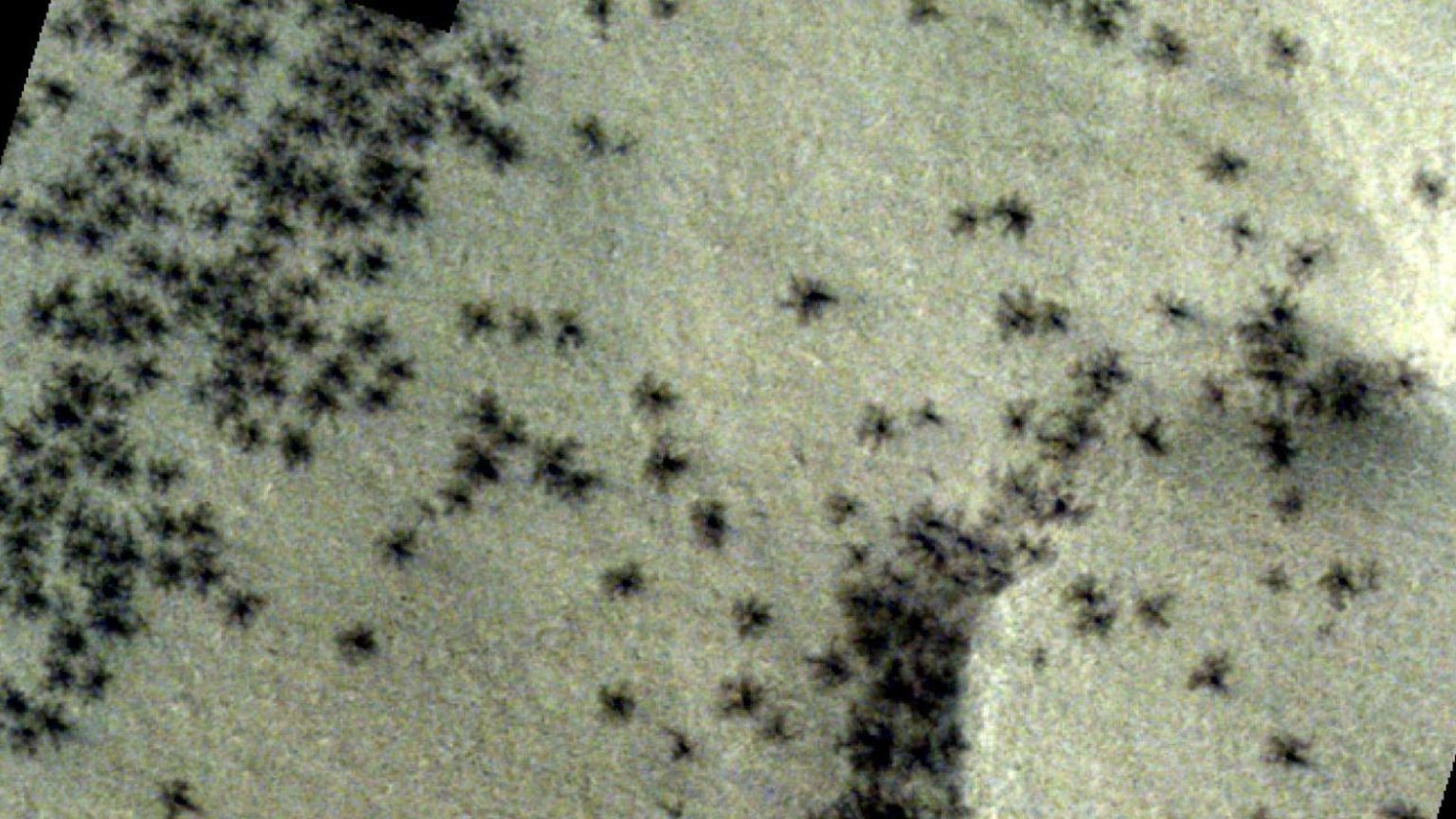The European Space Agency recently shared an image captured by its Mars Express spacecraft that showcased dark formations on the red planet’s surface, leading to the playful title “Signs of spiders from Mars.” These formations, found in an area known as Inca City, resemble spiders but are not actual arachnids. Instead, they are linked to seasonal changes on Mars, where carbon dioxide layers build up during winter and then break through ice in the spring, causing dark dust to blast upward and create spider-shaped patterns below the surface.
The “spiders” are a result of gas bursting through the ice like a geyser, dragging dark material to the surface and shattering layers of ice. ESA released an image from its ExoMars Trace Gas Orbiter showing a clear view of the formations near Inca City, appearing like dark confetti scattered across the surface. The region of Inca City, also known as Angustus Labyrinthus, has been a subject of interest for researchers for decades and is believed to have formed due to volcanic and tectonic forces.
Mars Express, launched in 2003, is a long-lived mission designed to study Mars’ atmosphere, geology, and search for water. It was Europe’s first mission to the red planet and has recently reached the milestone of 25,000 orbits. The spacecraft’s High Resolution Stereo Camera captured the image of Inca City and its surrounding features. This discovery of spider-like formations on Mars brings to mind David Bowie’s band “The Spiders from Mars” and his alter ego Ziggy Stardust, highlighting how far our understanding of Mars has come since the 1970s.
Despite the playful reference to spiders on Mars, scientists have not found any evidence of past or present life on the red planet. NASA’s Perseverance rover mission aims to continue the search for signs of life on Mars. The unique seasonal changes and geological formations observed on Mars provide valuable insights into the planet’s dynamic nature. The spiders serve as a reminder of the ongoing exploration and discovery of Mars’ mysterious features.
The image captured by Mars Express represents a significant achievement for the ESA mission and adds to the growing body of knowledge about Mars’ unique geography. The spacecraft’s detailed view of Inca City and its surrounding terrain further enhances our understanding of the planet’s complex geological history. As researchers continue to study Mars and its seasonal changes, new discoveries and insights into the red planet’s evolution are expected to emerge.
The spiders on Mars serve as a reminder of the planet’s dynamic nature and the ongoing exploration efforts conducted by space agencies. With advancements in technology and the dedication of researchers, our understanding of Mars continues to evolve. The playful reference to David Bowie’s band and the intricate geological formations found on Mars highlight the complexity and beauty of the red planet, encouraging further exploration and discovery in the pursuit of unlocking its mysteries.















